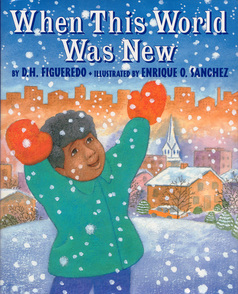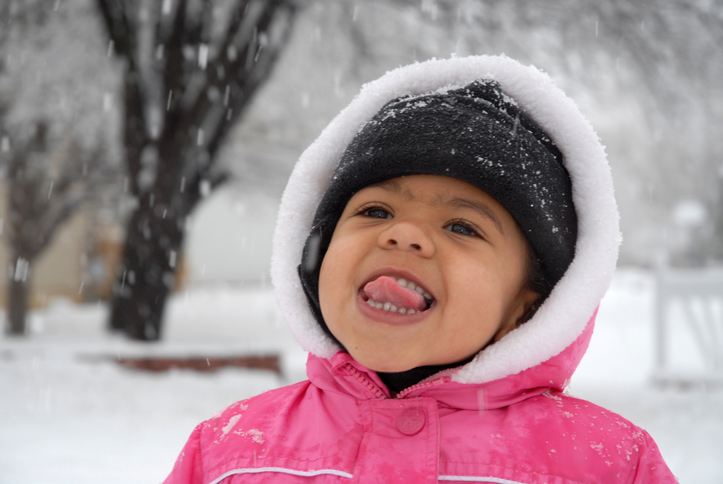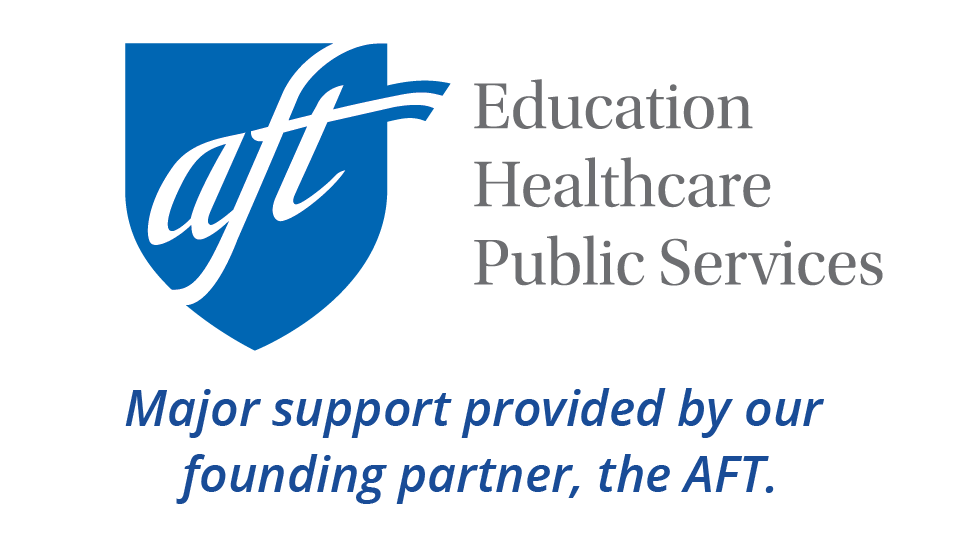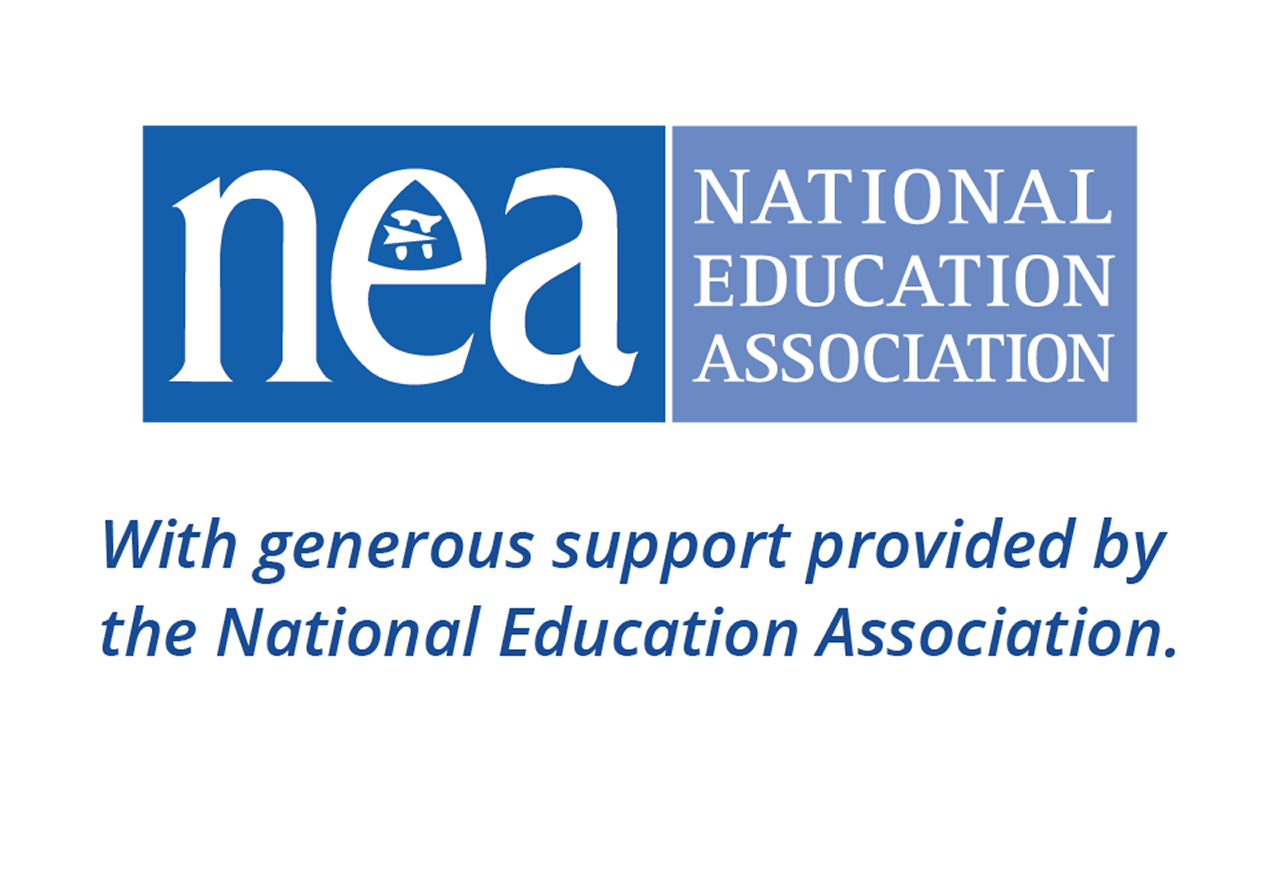During winter, it is essential that schools communicate effectively with families of English language learners (ELLs) about school closing, schedules, and resources related to winter weather. This is particularly important for newcomer families who are experiencing their first winter.
These tips offer ideas on communicating with ELL families, as well as multilingual resources from schools around the country and Canada. While some of these tips focus on immigrants, the ideas here provide helpful guidance on ensuring that all families have the information they need to stay safe.
Note: Some of this information should be shared with families at the beginning of the school year or whenever new students enroll; other ideas here would be great topics for family events.
Staying Healthy, Safe and Secure in Winter
Families can face a range of challenges that are exacerbated by the winter weather, including:
- higher rates of infection and illness during cold and flu season (on top of COVID-19 surges and waves of illnesses such as RSV)
- economic insecurity regarding housing, heating, and food
- uncertain schedules regarding school closures
- school busing complications that may result in students using their own transportation, walking farther distances, or longer wait times outside
- lack of communication with ELL families in their home languages regarding schedules and updates
- additional complications if major snowstorms, ice storms, blizzards, or other weather events impact local services.
In order to increase the chances of keeping students safe and healthy, it is critical that schools and districts:
- communicate all essential information with ELL students and families in their home languages as leaders make plans, changes, or announcements during this winter
- share information about food, clothing, housing, or heating assistance with ELL families in their languages
- continue to understand how the pandemic is impacting their ELL/immigrant families.
Delivery of Instruction
1. Ensure that families know how (and if) instruction will be delivered.
Districts can vary in their plan to offer online classes when schools are closed for inclement weather. Families need to know how and when to access instruction if online classes will be offered.
This information must be communicated to families in their home language not only to ensure students are learning and being marked present but that they are safe ― especially since different districts are taking different approaches to this issue.
Winter Weather Policies and Safety
2. Make sure families have information about school inclement weather policies in their home language.
While schools are required to share all handbooks and safety policies in languages that parents understand, providing a translation of the winter weather policy doesn’t ensure that parents will know what it means when bad weather arrives.
At the beginning of the school year, and whenever a new student enrolls, ensure that parents understand:
- the difference between a delay, closing, and early release
- how busing will be affected during those changes
- how the school will communicate this information to parents
- where/how parents can sign up for notifications such as text messages or e-mails on school-related updates and closings.
Schools may also wish to rethink how they are communicating with multilingual families; these tips for communicating with ELL families during COVID-19 offer additional ideas.
Winter Weather Websites
Take a look at how these districts present their winter weather information to families:
- Winter Storm Survival Tips in Multiple Languages (International Institute of Buffalo)
- Winter Weather Safety: Tips in Multiple Language (Vermont State Government)
- Parent Guide to Winter Weather Procedures in English, Spanish, and Vietnamese (Wichita Public Schools, KS)
- When is school closed due to weather? in English, Spanish, and Hmong (Madison Metropolitan School District, WI)
- Winter Weather Plan (St. Paul Public Schools, MN)
In addition, talk about what kinds of weather are likely to cause a weather delay or closing, including snow, ice, freezing rain, and freezing temperatures (and hurricanes and tornadoes in other parts of the country). An ideal setting to share this information is a meeting with a group of parents. It is best to have an interpreter available so that parents can ask questions and ensure they understand all of the information as well as have translated handouts with graphics they can take with them.
For a personal example that will highlight the importance of taking extra steps to share this kind of information, take a look at vignette #2 in our article, Lessons Learned from Immigrant Families about a newcomer student, Carlos, who arrived alone for his first day of school on January 8 to find the doors to the school locked because it was a snow day.
In addition, it is important to consider how transportation policies may impact ELLs and whether students have equitable access to transportation. For example, during the height of the COVID-19 pandemic, an ELL educator shared that some districts were expanding "walk zones" in order to save money and adhere to social distancing requirements. This put an additional burden on families who lived within the walk zones (which sometimes covered large geographical distances) but didn't have a vehicle.
3. Share options for back-up child care or transportation with families.
The challenges of providing child care when school have delays, early release, or closing have been underscored by the COVID-19 pandemic. Schools can help families by identifying some options that might be available in the school community (although some may also be closed during inclement weather).
In addition, make sure any information about partner programs with child care options that are open when schools are closed, such as a partnership with the Kansas City YMCA in Platte County Schools (MO), is available for parents in their home languages.
Finally, understanding how school closings work and doing a little planning can help families prepare more effectively for school closings. This may include asking for help from a neighbor, caretaker, classmate, or relative who can take care of, drop off, or pick up the child depending on the time of day of the schedule change.
4. Share information on winter safety and wellness with families.
Parents who are new to winter climates (as well as parents who have lots of experience with winter weather!) will benefit from reminders on cold weather safety and wellness ― tips such as removing cold and wet clothing quickly, making sure children avoid playing near big piles of snow on the street, heating a home safely and cost-effectively, waiting a safe distance from the school bus, and the importance of good hygiene during cold season. This also includes understanding why cold and flu season ramps up during the winter and why it may be particularly challenging during COVID-19.
If students are attending in person, send home reminders for students to wear warm clothing to school so they are prepared if they are playing outside, and students who are not adequately clothed for cold weather (gloves, hat, scarf, winter jacket, heavy socks, and boots) may not be allowed to play outside.
In addition, talk about the signs of frostbite and provide tips for preventing and treating frostbite if exposed to cold temperatures. For more bilingual tips on winter safety, see the links at the end of this article.
5. Help students and families understand the outside temperature.
What does 12 degrees Fahrenheit mean? What is the difference between 0°F and 0°C? What do "below zero" and "wind chill" mean? Students may not understand just how cold it is as they head to school and may get frostbite while walking or waiting for the bus. Explain where families can check the temperature each morning, keeping in mind that they might not have access to smart phones or the Internet. They also may come from countries that use Celsius temperatures. If families don’t have access to a television, radio or telephone to call a weather hotline, talk with local community agencies to see if there is a way to provide some low-cost communications equipment for safety purposes.
3 Ways to Stay Safe Around School Buses in the Snow
See these tips on winter school bus safety from St. Paul Public Schools.
6. If families have a car, encourge them to have a plan in case they break down or slide off the road, as well as an emergency kit.
Items to include in an emergency kit are listed on this CDC website (also in Spanish). Encourage families to keep warm clothes (even a blanket) in the car since it gets cold while waiting for help. Minnesota teacher Kristina Robertson notes that she keeps a coffee can with a candle, matches in a ziploc, a flashlight, and a chocolate bar in her car – although the chocolate bar always seems to disappear!
7. Explain some ways families can prepare for a bad storm.
Families will have to get food, water, milk, and other supplies such as diapers if a big storm impacts their area. Also, if power is down, families should know that the heat may be off. Above all, they need to find a way to follow the local news for updates and make sure they understand the information being conveyed on the news. Remind families of this information if a storm is forecast.
Related Video: From Trinidad to Brooklyn
Author Tracey Baptiste recalls moving from Trinidad to Brooklyn at the age of 15 and her first long winter.
Clothing, Food, and Heating Needs
8. Hold a winter clothing drive and share information on where families can find winter clothes if needed.
New immigrant and refugee families may not have warm winter clothing, even if they are arriving to an area of the country with long, cold winters and a lot of snow (which is true of many refugee resettlement cities such as the Twin Cities, Buffalo, Portland, ME, Fargo, ND, etc.). Other families in your school may also need assistance getting warm clothes. Consider holding a winter clothing or coat drive. For local organizations or businesses that would like to do something for your school, this can be an easy and effective way to make a big difference for kids quickly. Make sure the information about the drive is available in families’ languages (such as this announcement from Montgomery County Public Schools, with other languages to the right). In addition, find out which local shops or organizations offer free or discounted clothing to families, such as Goodwill and the Salvation Army.
For example, educators at McCollough-Unis Public School in Dearborn, MI have started a winter clothing drive for refugee families and new immigrant families focused on jackets, coats, hats, gloves, socks and boots. Once they reach their target goal on the basics, they provide pants, long-sleeved thermals and sweaters to families. Staff at Danville Community College in Illinois started a glove drive after noticing a student with red, chapped hands who said she couldn’t afford gloves.
Mister Rogers' Sweater Drive
Each year, PBS stations, community groups, and schools hold Mister Rogers' Neighborhood Sweater Drives benefitting families in need, such as these events from WJCT (FL) and Arkansas PBS.
At the same time, keep in mind that some families needing winter clothes may not wish to participate in a public clothing drive, or they may think that, due to circumstances such as immigration status, they are not eligible. They also may not know about the kinds of support available through the school. Keep in close contact with other teachers, social workers, counselors, and parent liaisons who may be able to approach families discretely or set up a kind of anonymous distribution. Look for the ideas and supports that fit your families best and approach the topic with sensitivity.
9. Teach students and families how to dress warmly in layers.
Demonstrate how to dress for winter and explain how layers keep you warm without overheating. For ideas on how to share this information, take a look at this helpful video and handout about dressing for winter (with degrees in C°) used frequently by educators in Ontario, Canada with newcomers and refugees. For recommendations on winter safety when the electricity goes out, take a look at these tips in multiple language from the Vermont State Government.
10. Hold a food drive and find out where families can find food if schools are closed.
As the COVID-19 pandemic has made painfully clear, school closings can add extra hardship for children who depend on school meals. Schools should look at their meal distribution plans to determine how they might be affected by inclement weather. They can also find out if local food banks, soup kitchens or community and religious organizations have emergency meals or pantry supplies and make sure parents have that information if there are options available.
This NPR story from before COVID-19 notes that meals missed during closings or delays may make kids extra impatient to get their next school meal; may impact behavior or attention in the classroom; and may increase nurse visits for stomachaches. In addition, weather closings coming at the end of the month may hit families hard who depend on food benefits.
There may, however, be some creative ways to help families get the food they need. For example, the Owsley County School District in Kentucky drops off meals on days that schools are closed to other places in the community such as libraries, churches, and housing developments. (Owsley also started experimenting with virtual classes on snow days long before virtual schooling became the norm.)
As noted above, keep in touch with colleagues who may be able to approach families privately regarding their food needs.
11. Consider starting an emergency clothing/food pantry at the school.
Some schools keep a closet or small room stocked with emergency food supplies and clothing for families in need. Learn more about one school taking this approach from Principal Mark Gaither at Wolfe Street Academy in Baltimore, MD, a community school. Wolfe also holds clothing giveaways throughout the year.
12. Help parents understand how to pay heating bills or get financial assistance to avoid having the heat shut off.
Newcomers and refugees may not know the process for paying bills for their home, which can lead to a loss of services. For example, Kristina Robertson shares that her team helped a refugee family that was about to be evicted because they didn't know they were supposed to pay rent and had to learn how to do so. Every state has policies regarding utility disconnection, which you can learn more about from this federal website. You may also be able to find energy assistance programs to help families who need help paying heating bills, such as the Low Income Home Energy Assistance (LIHEAP) program. Find out what options are available for families in your community from local agencies and organizations.
13. Think about creating partnerships with local organizations.
You may be able to create a long-term partnership with an organization that can provide ongoing support to families by providing clothing, weekend food giveaways, assistance for heating bills, or help to meet other challenges that are faced during the winter. Organizations with ties to a particular neighborhood or immigrant community may have useful ideas and resources, as well as community members who want to help.
Video: Providing hurricane evacuees with winter gear after Hurricane Maria
Elisa Morales, Executive Director of the Spanish Action League in Syracuse, NY, talks about the importance of providing winter gear to evacuees who came from Puerto Rice following Hurricane Maria.
Ideas for the Classroom
14. Look for classroom connections, related books, and student experiences that can be tied into lessons.
 You can tie winter weather to lessons about a variety of topics, including science, Social Studies, and language arts ― from the brutal conditions at Valley Forge to the ecosystem of the snowy tundra. Here are some ideas from sites such as National Geographic. Our bilingual booklist about snowy stories also has a number of books that students will enjoy.
You can tie winter weather to lessons about a variety of topics, including science, Social Studies, and language arts ― from the brutal conditions at Valley Forge to the ecosystem of the snowy tundra. Here are some ideas from sites such as National Geographic. Our bilingual booklist about snowy stories also has a number of books that students will enjoy.
In addition, no matter their country of origin, students may have special holidays or traditions that they celebrate during the winter months. Look for ways that students or families can share those experiences in the classroom or during a family event at the school ― and this may be a good change of pace is winter starts to feel a little too long!
15. Finally, don’t forget the fun ― and the magic!
 Winter can be challenging ― but it can be a lot of fun too! A student’s first snowfall can be a magical experience, and it’s one of the things that many ESL teachers say they enjoy most about teaching ELLs. In this video, teacher Amber Prentice talks about her students’ excitement when they first see snow and admits that whatever she had planned for the day usually has to take a backseat to a trek outside to see the snow up close.
Winter can be challenging ― but it can be a lot of fun too! A student’s first snowfall can be a magical experience, and it’s one of the things that many ESL teachers say they enjoy most about teaching ELLs. In this video, teacher Amber Prentice talks about her students’ excitement when they first see snow and admits that whatever she had planned for the day usually has to take a backseat to a trek outside to see the snow up close.
Tell your students about some of the fun things they can do in the snow, like sledding or building a snowman! Share some safe locations for sledding with families that they can try, like a local park (as opposed to piles of snow on the street). You can even make it an "official" school activity by providing sleds and some warm clothes suitable for the snow. Families will have fun and get to experience some typical U.S. winter activities!
Closing Thoughts
Through effective communication and outreach, schools can partner with families more effectively to navigate the winter months. Providing this important support can improve health, safety, and learning for ELLs ― and perhaps make it a little easier for families to spend some time creating good winter memories together.
Winter Safety Tips and Information
- Winter Weather Safety (Vermont State Government – Multiple Languages)
- Tip Sheets: Outdoor Play: Weather or Not (Illinois Early Learning – Spanish, Polish)
- Playing Outside in Winter (HealthyChildren.org – Spanish)
- Helmets for Winter Sports (Seattle Children’s Hospital – Spanish)
- Be Prepared to Stay Safe and Healthy in Winter (CDC – Spanish)
- Family Winter Safety Tips (AboutKidsHealth, Canada – French)
- Heat Safety Tip Sheets (National Fire Protection Association – Multiple Languages)
- The "Stay Warm" Winter Guide for Canadian Newcomers: Dress warmly (Canadian Immigrant)
- The "Stay Warm" Winter Guide for Canadian Newcomers: Keep healthy and fit (Canadian Immigrant)
- How to Dress Warmly in Winter: Handout and Video (Ontario Resettlement Agency)
- Wind Chill Information (Madison Metropolitan School District)
- Helping Immigrants Warm to Winter (The New York Times)
- Winter Messaging Toolkit (Attendance Works – Spanish)








Add new comment